| Ophthalmothule | |
|---|---|
 | |
| Quarry map (A) and reconstruction (B) of holotype skeleton | |
| Scientific classification | |
| Domain: | Eukaryota |
| Kingdom: | Animalia |
| Phylum: | Chordata |
| Class: | Reptilia |
| Superorder: | †Sauropterygia |
| Order: | †Plesiosauria |
| Family: | †Cryptoclididae |
| Genus: | †Ophthalmothule Roberts et al., 2020 |
| Type species | |
| †Ophthalmothule cryostea Roberts et al., 2020 | |
Ophthalmothule (meaning "eye of the north"), was a cryptoclidid plesiosaur dating to the latest Volgian (around the Jurassic-Cretaceous boundary), found in the Slottsmøya Member Lagerstätte of the Agardhfjellet Formation in Spitsbergen. The type species is O. cryostea.[1]
Description
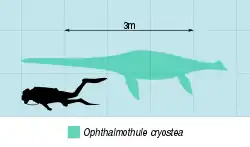
Opthalmothule was a medium-sized plesiosaur, measuring 5–5.5 metres (16–18 ft) long. It was noted to have unusually large eye sockets, which suggests a paleobiological specialization, such as deep water and/or nocturnal hunting. Along with Abyssosaurus, it is one of the youngest cryptoclidids known from boreal regions. The holotype is known from skeletal material that includes a complete cranium and a partial mandible, a complete and articulated cervical vertebrae, a set of pectoral and anterior to middle dorsal series, and the pectoral girdle and anterior humeri.[1]
References
- 1 2 Roberts, A.J.; Druckenmiller, P.S.; Cordonnier, B.; Delsett, L.L.; Hurum, J.H. (2020). "A new plesiosaurian from the Jurassic–Cretaceous transitional interval of the Slottsmøya Member (Volgian), with insights into the cranial anatomy of cryptoclidids using computed tomography". PeerJ. 8: e8652. doi:10.7717/peerj.8652. PMC 7120097. PMID 32266112.

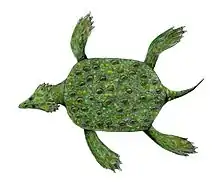
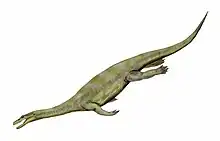
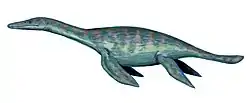

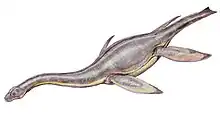

.png.webp)